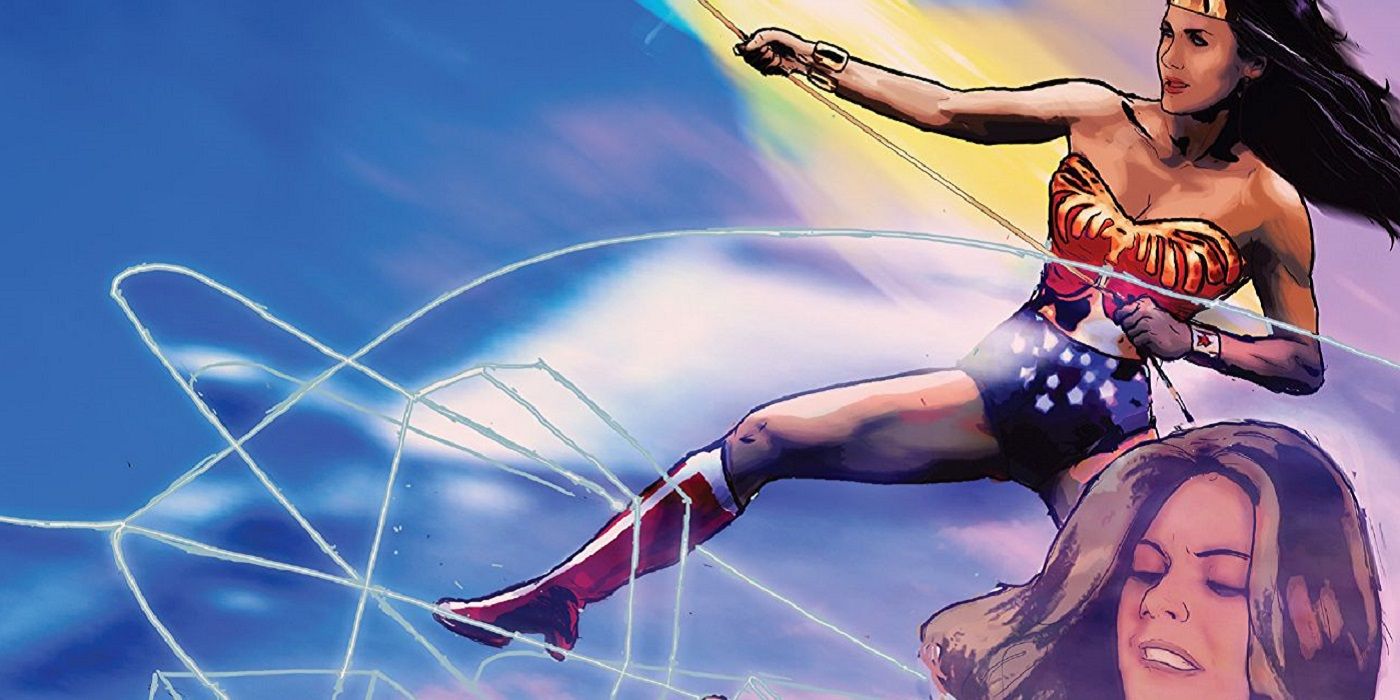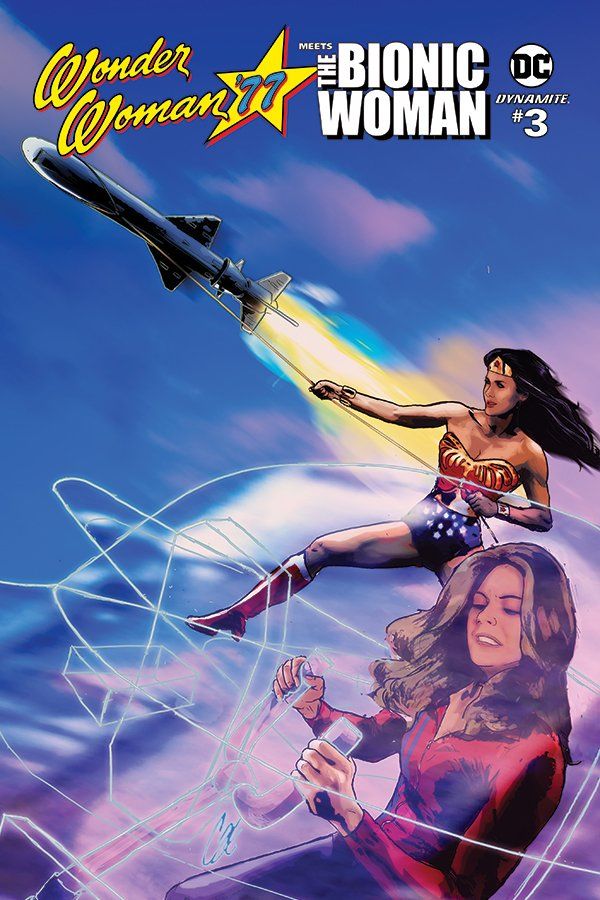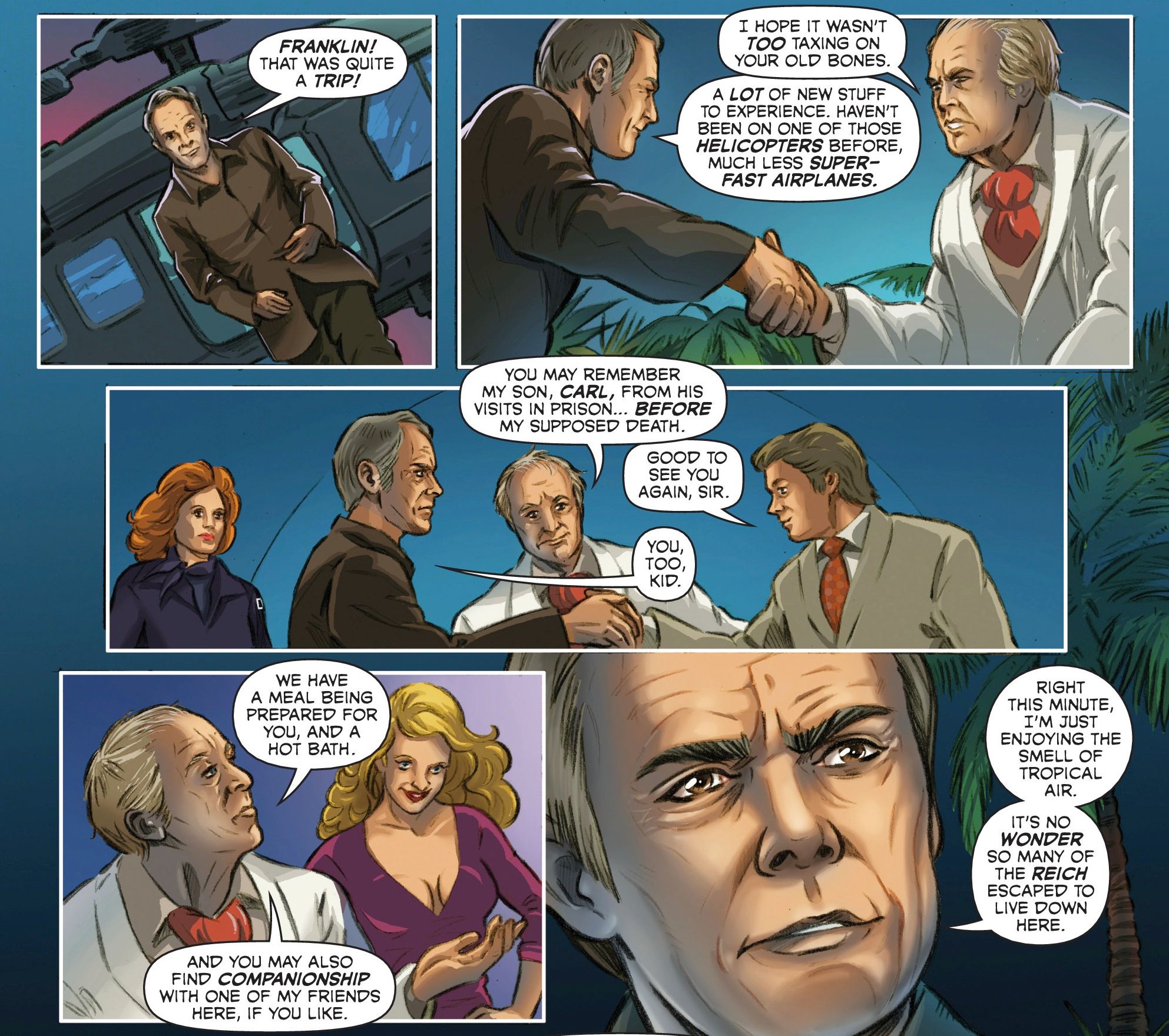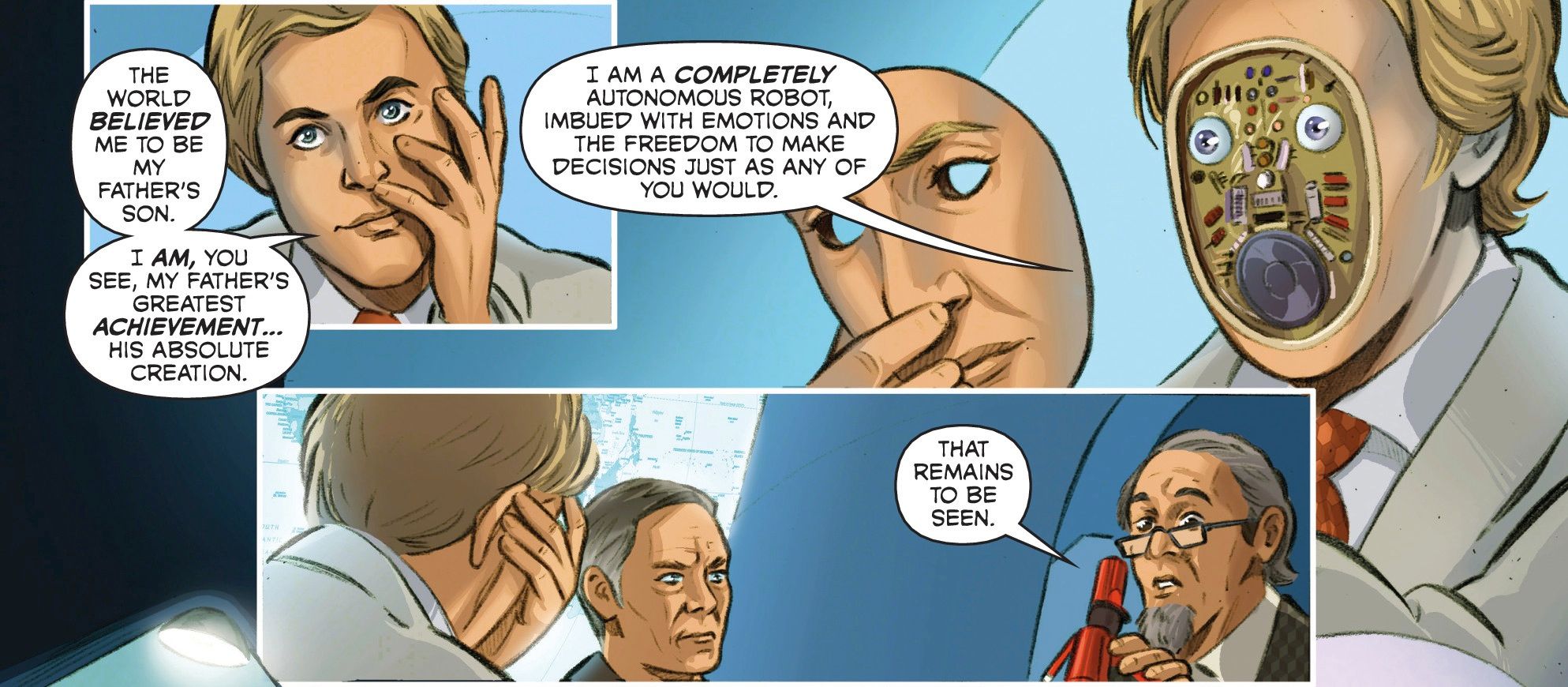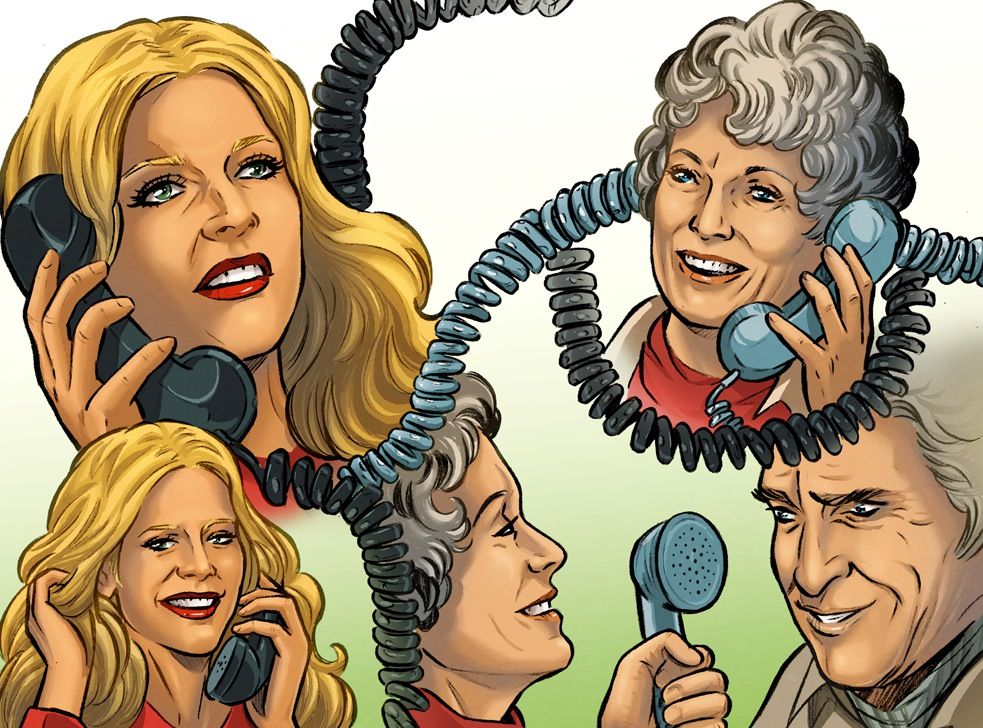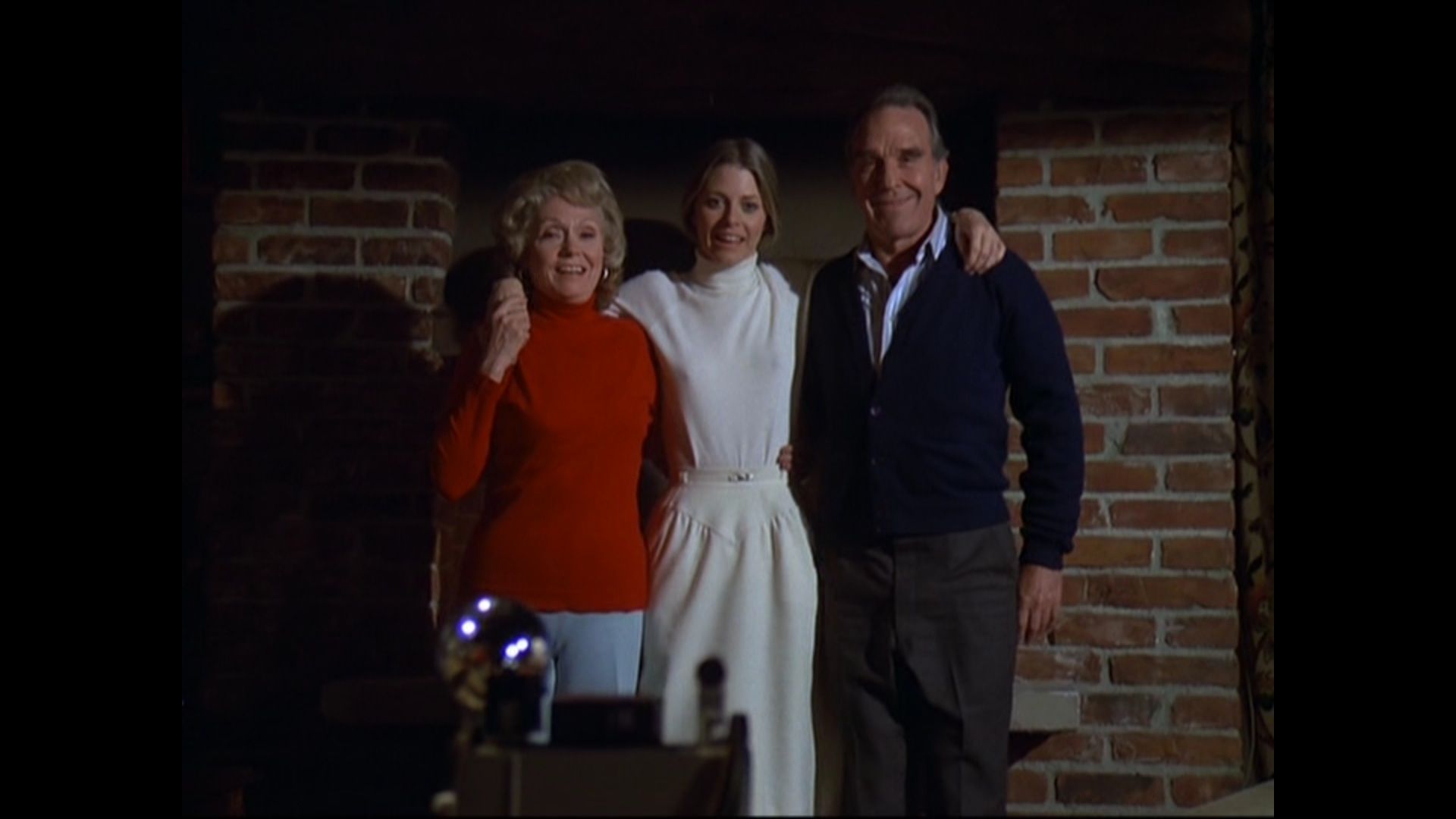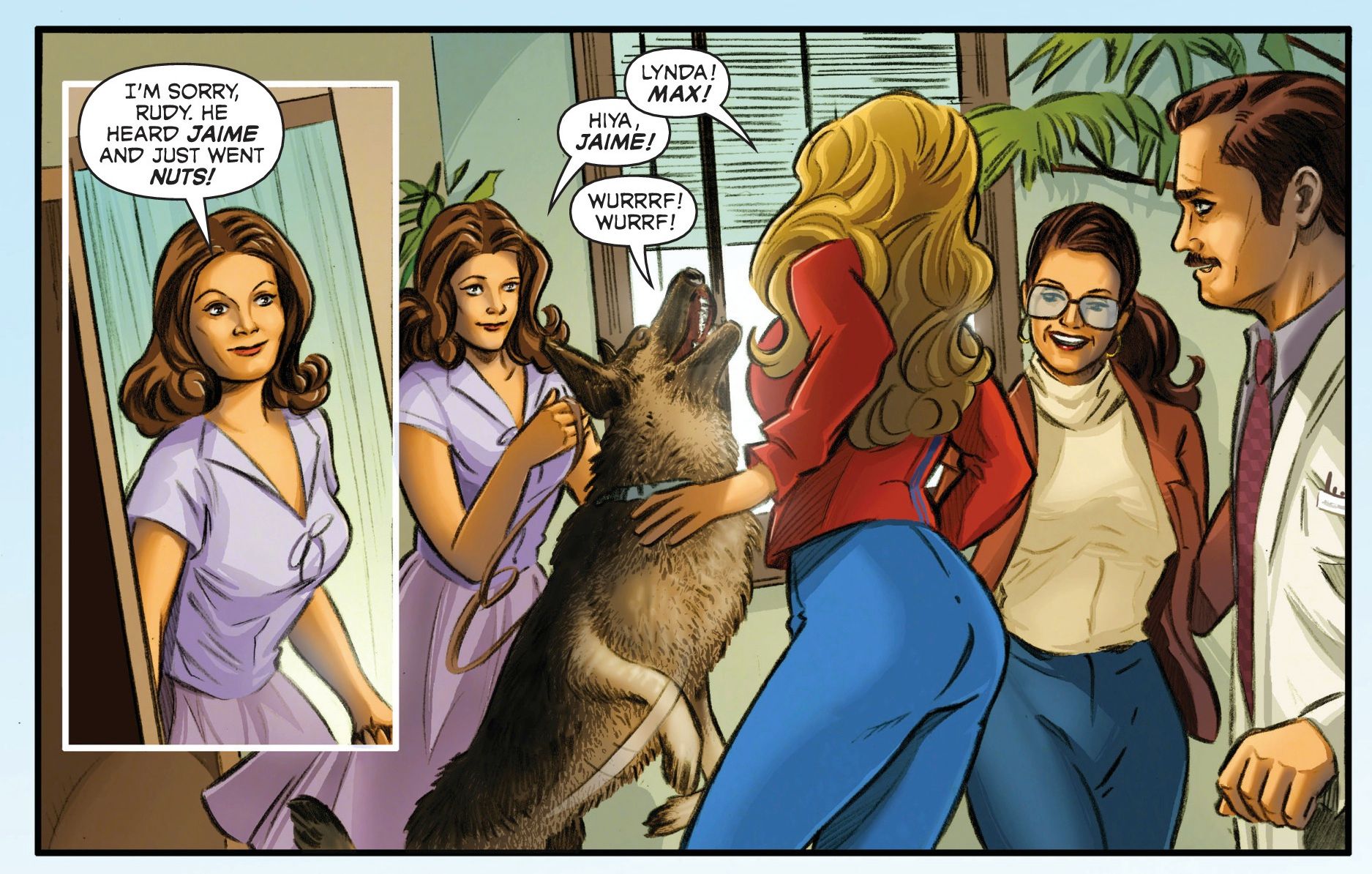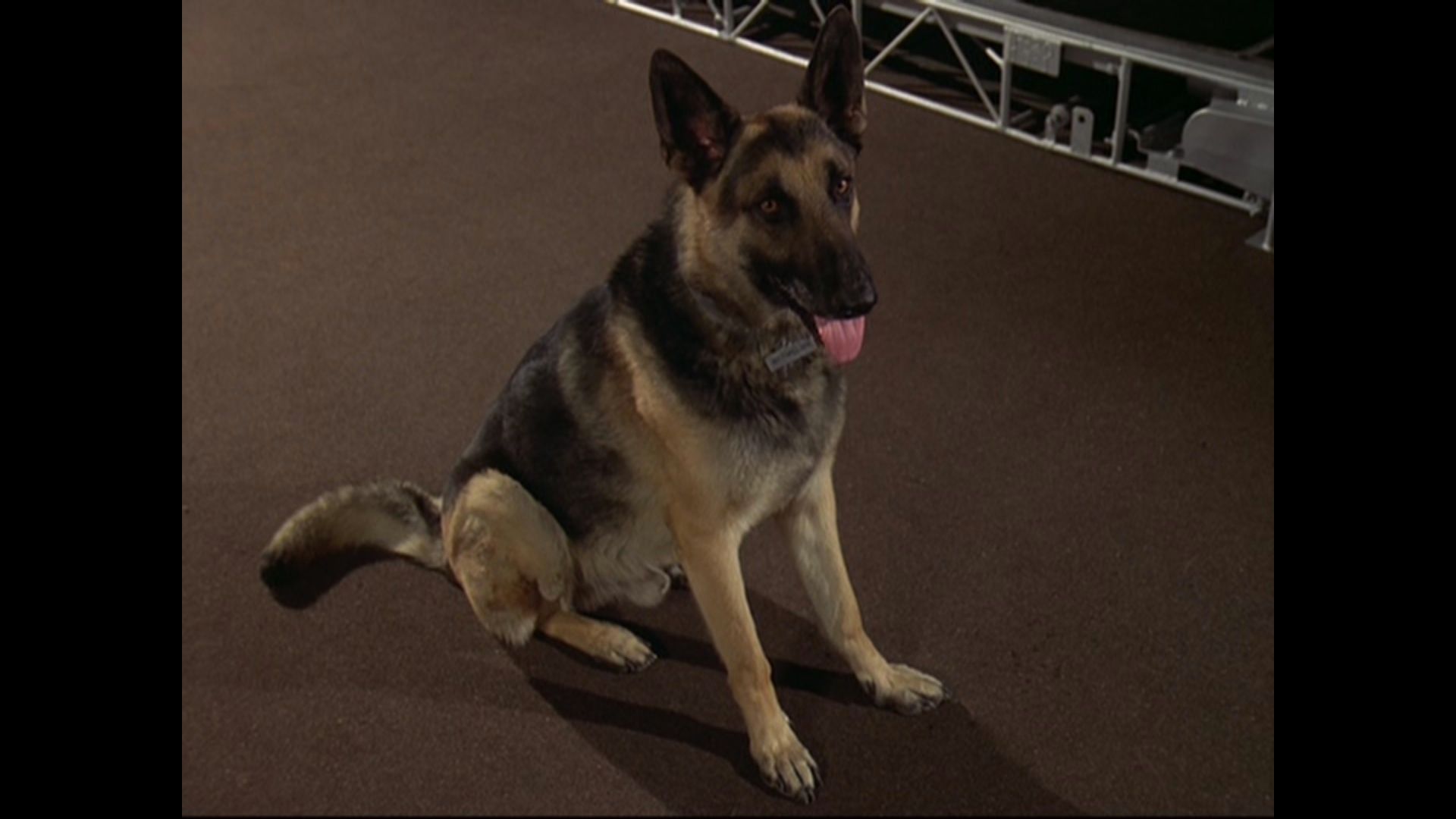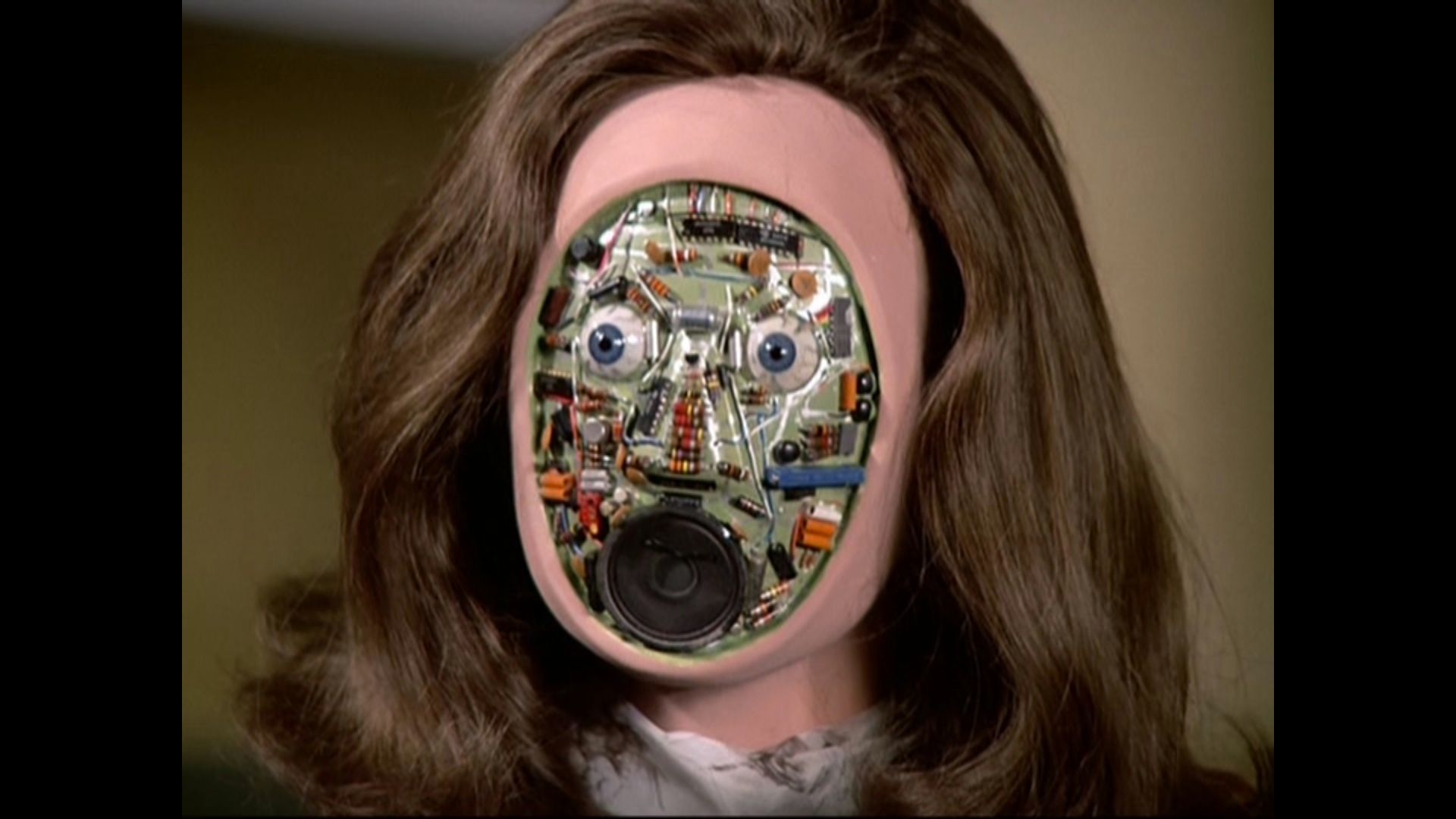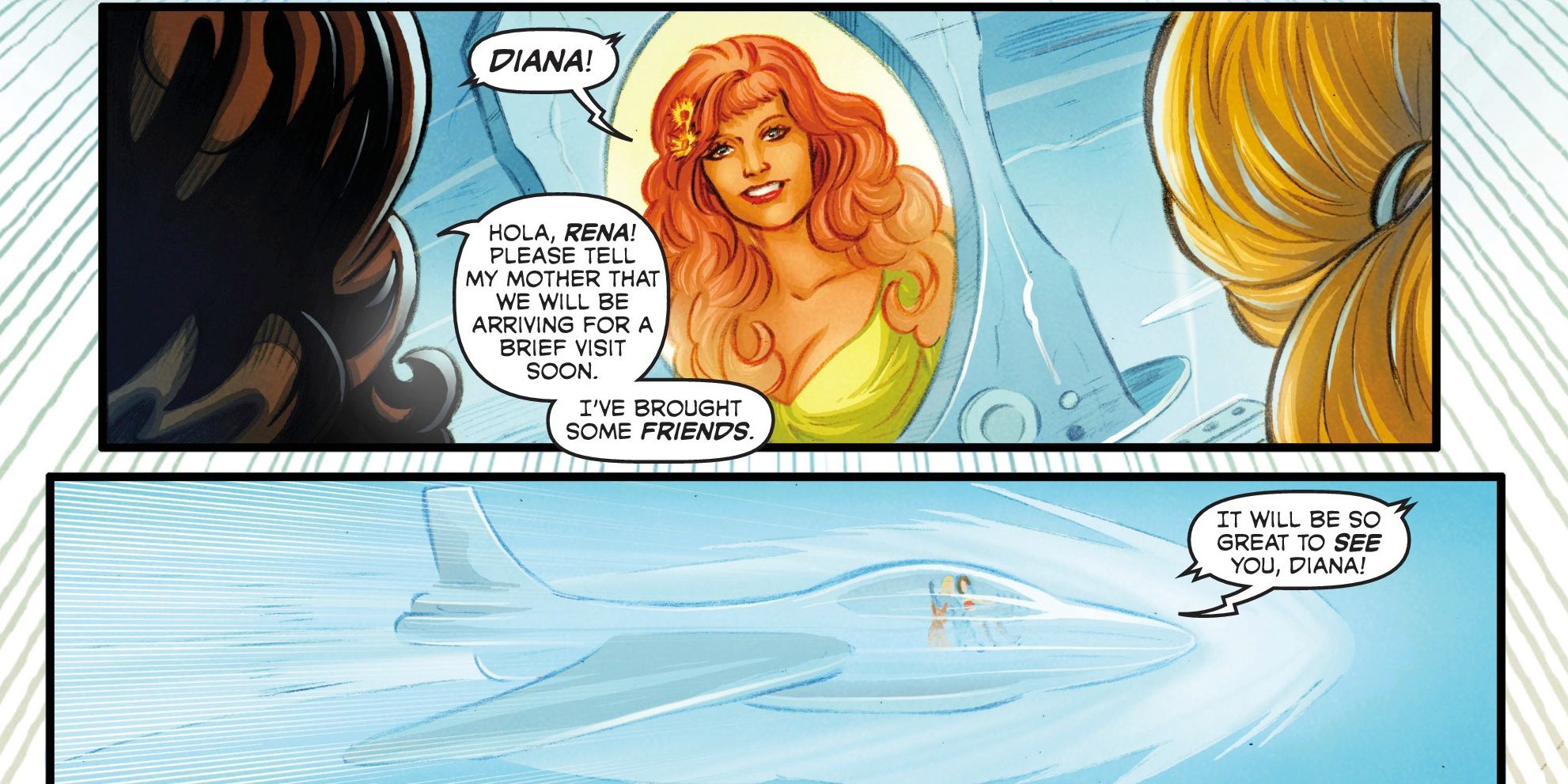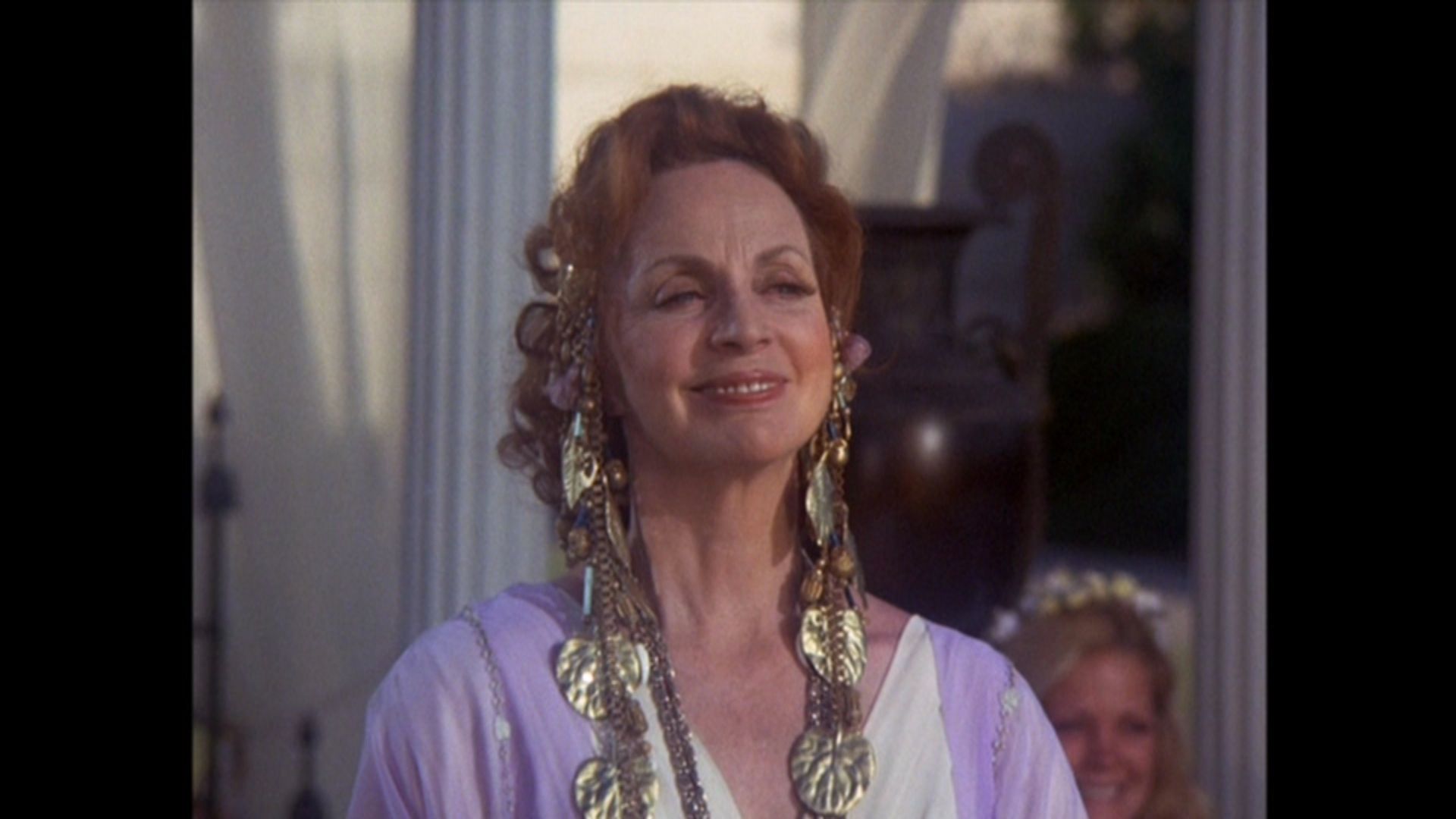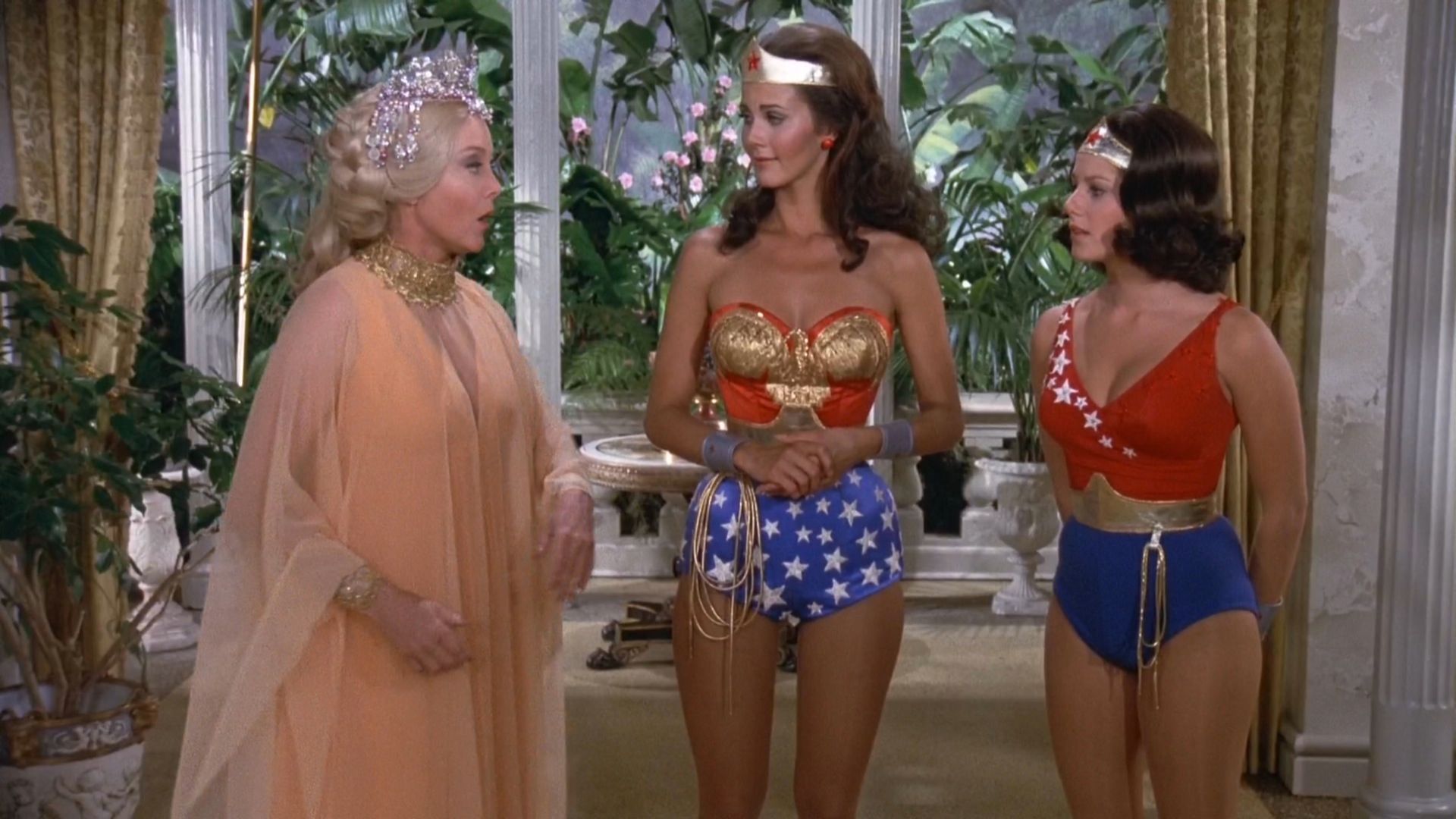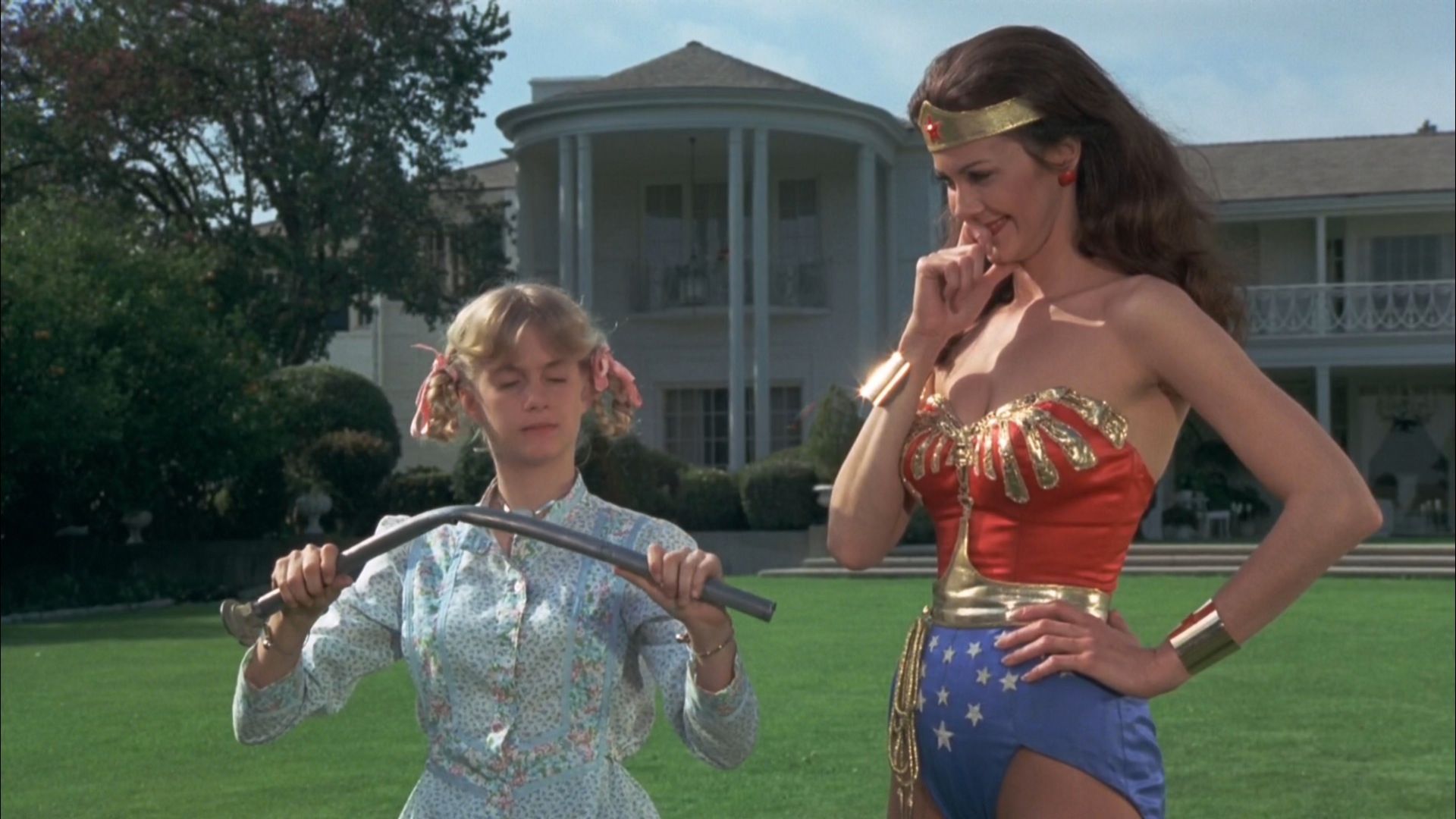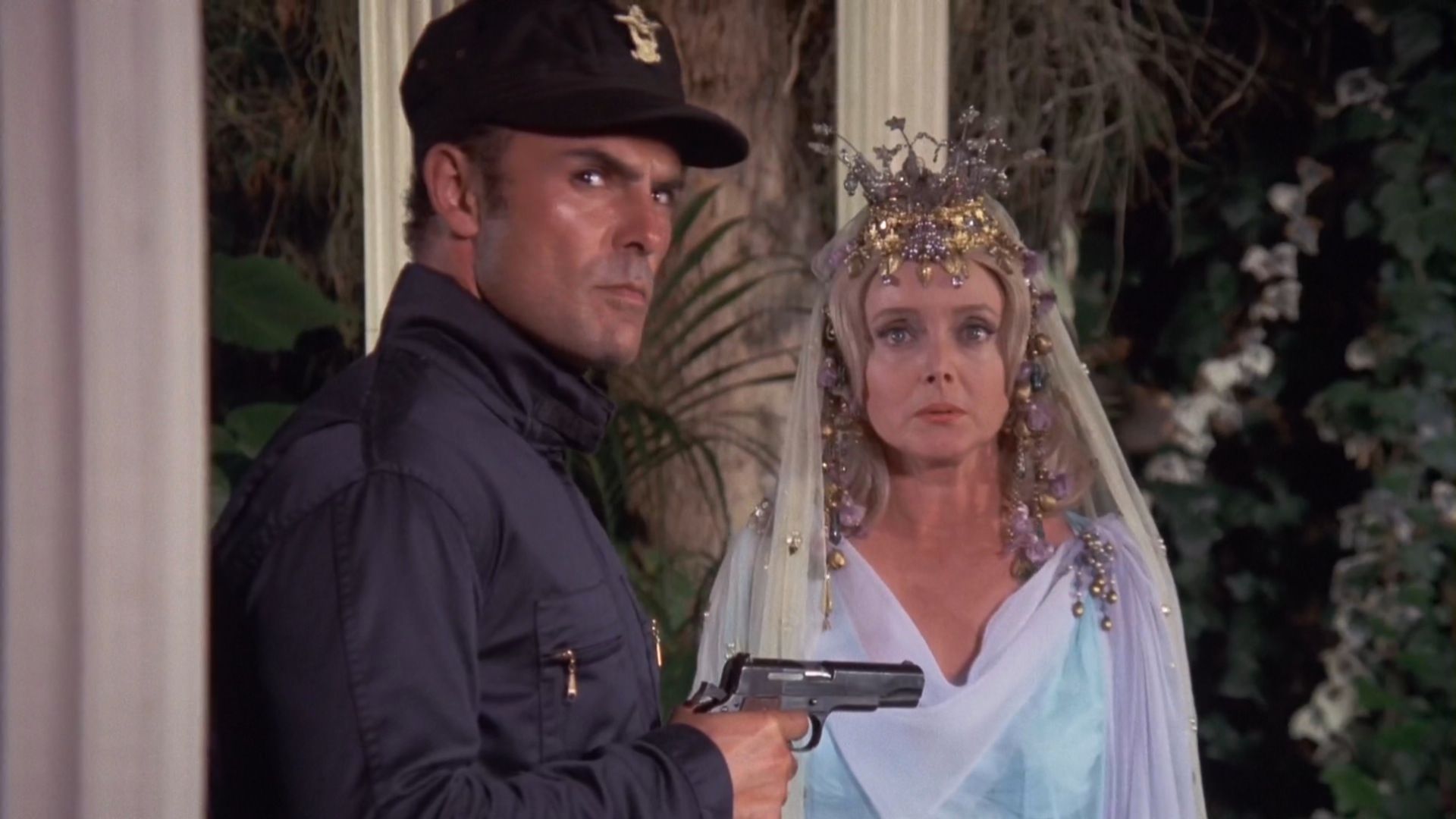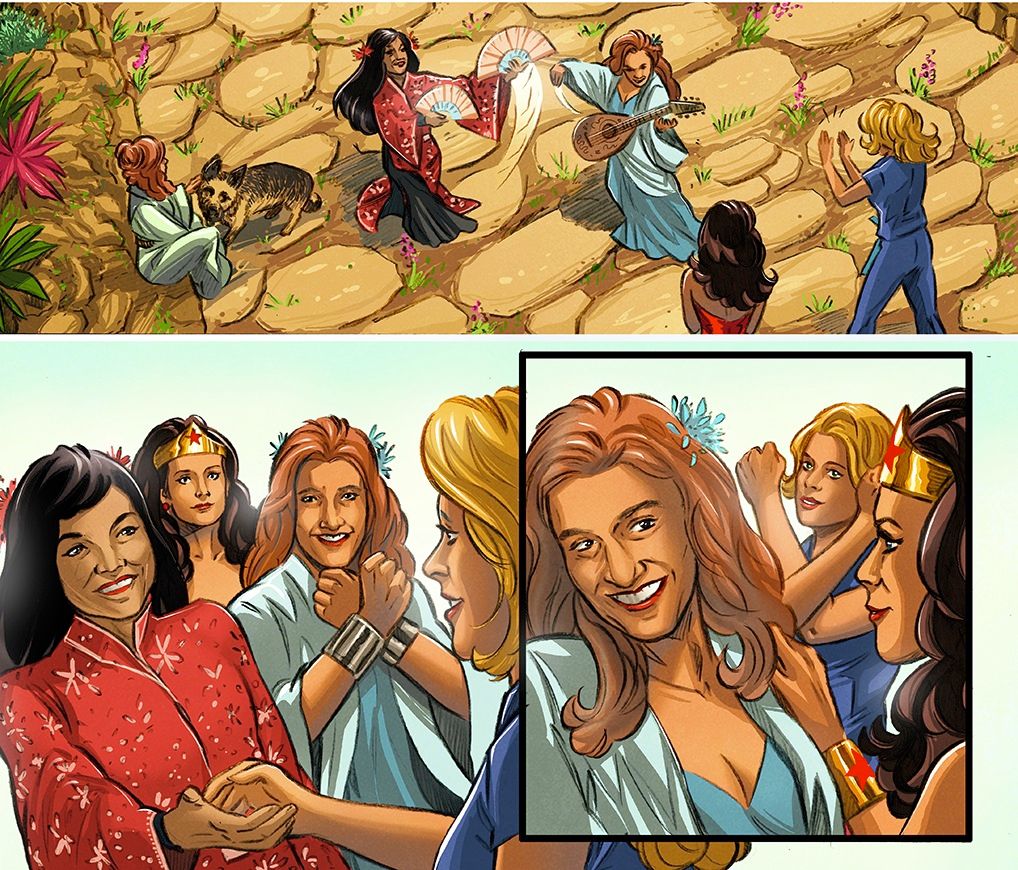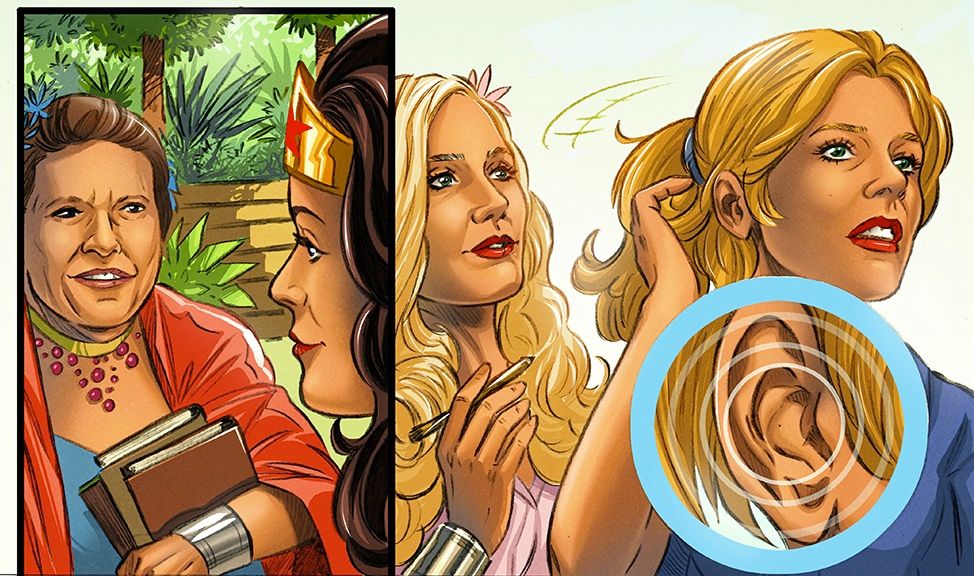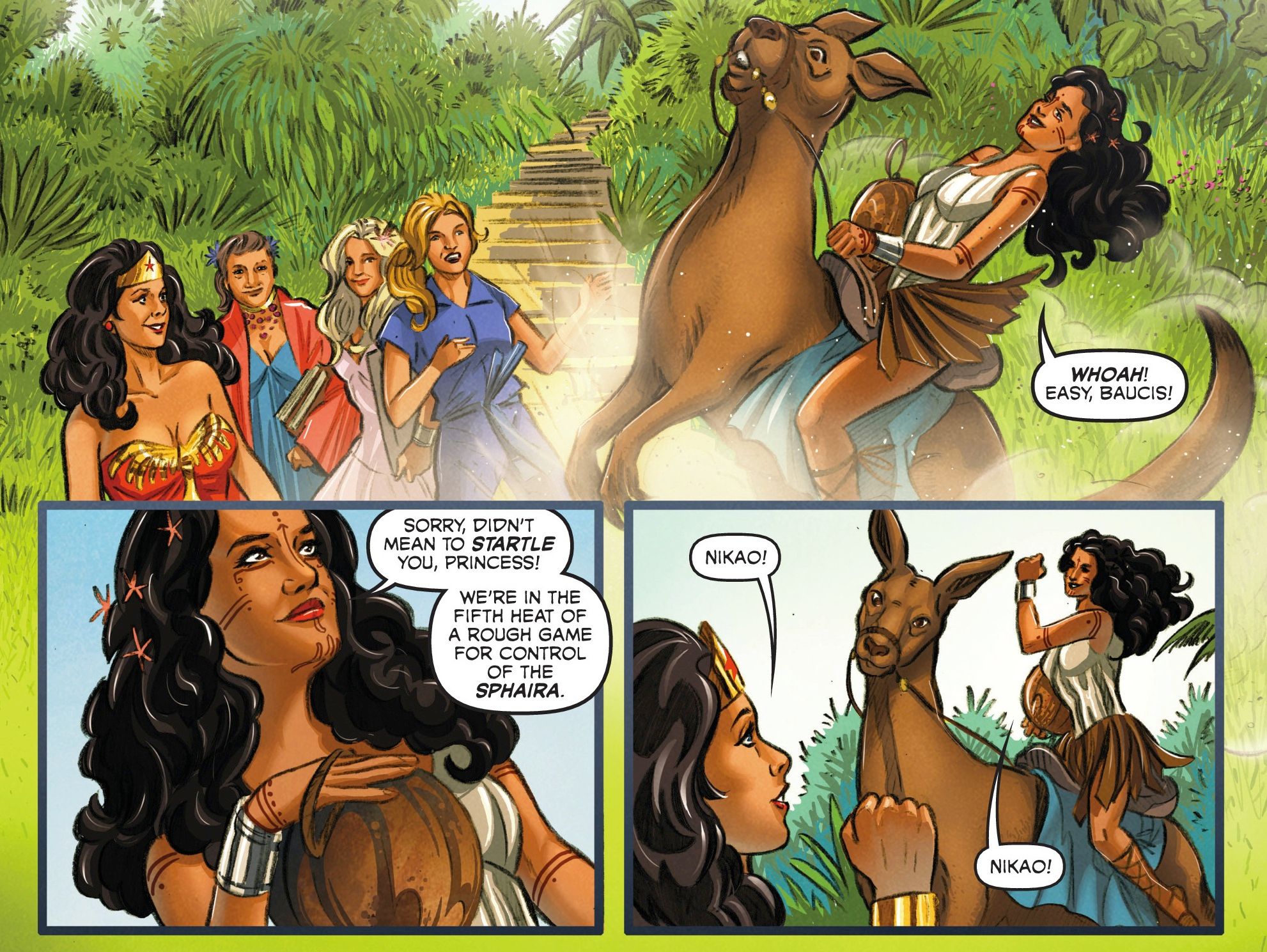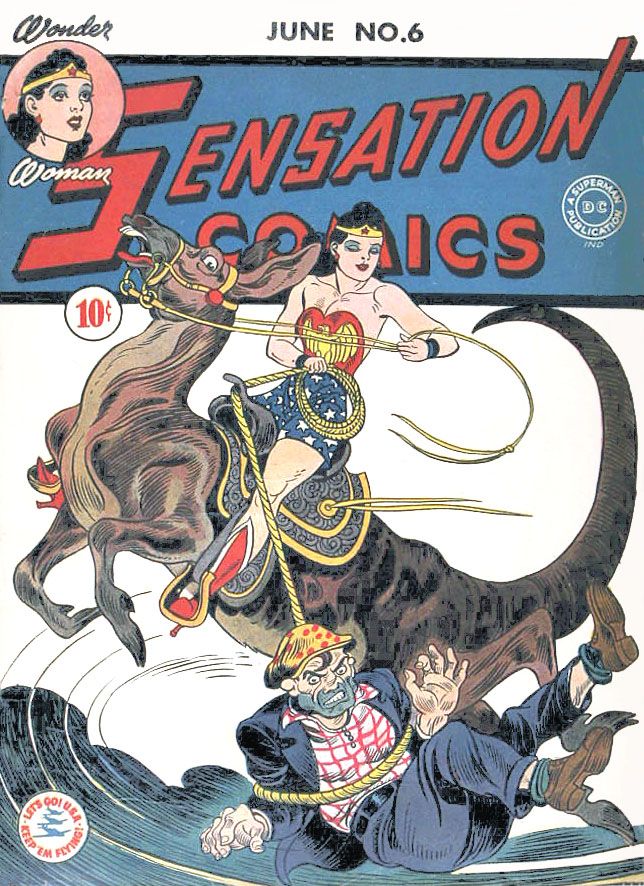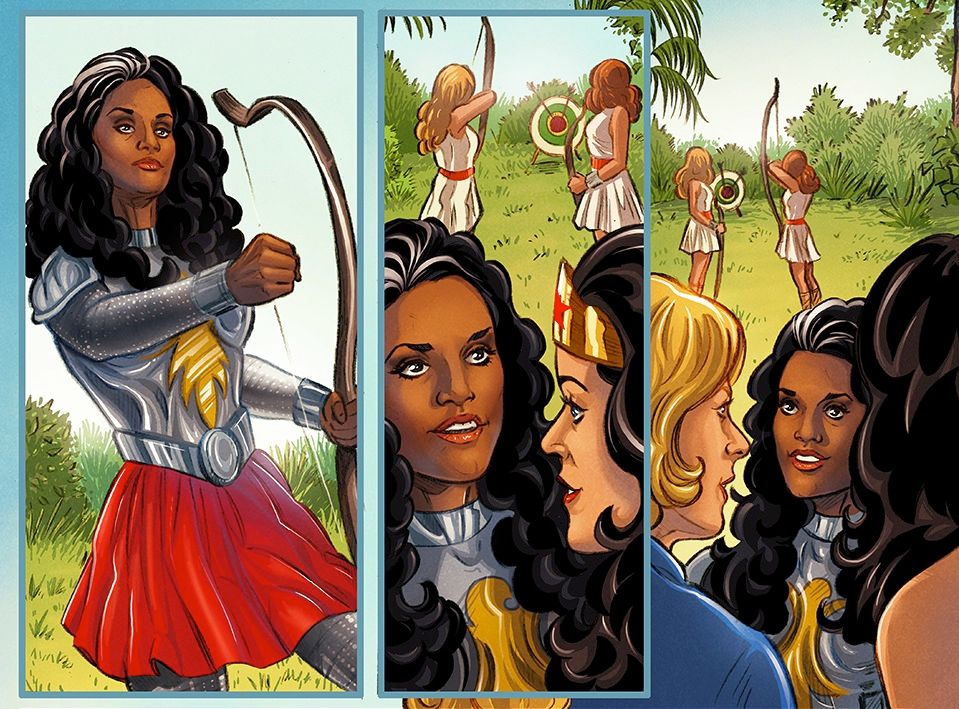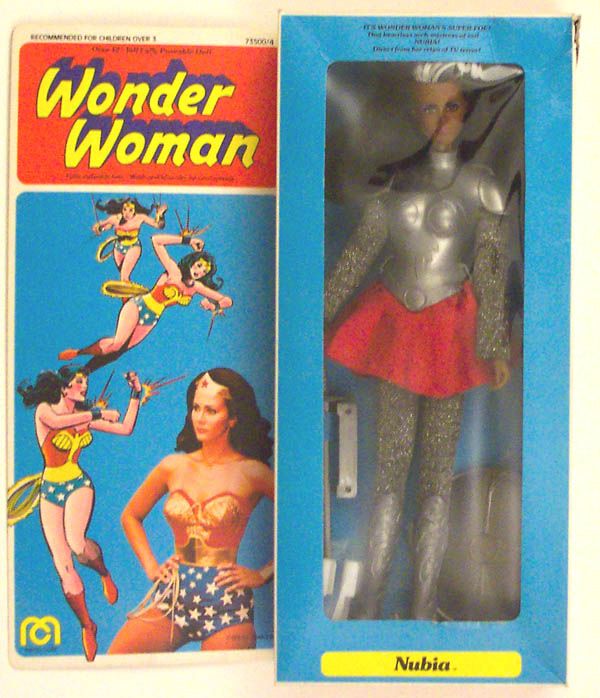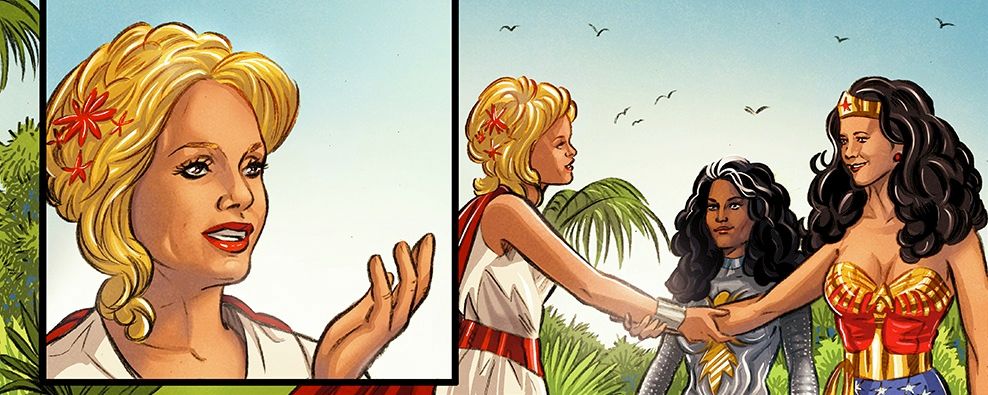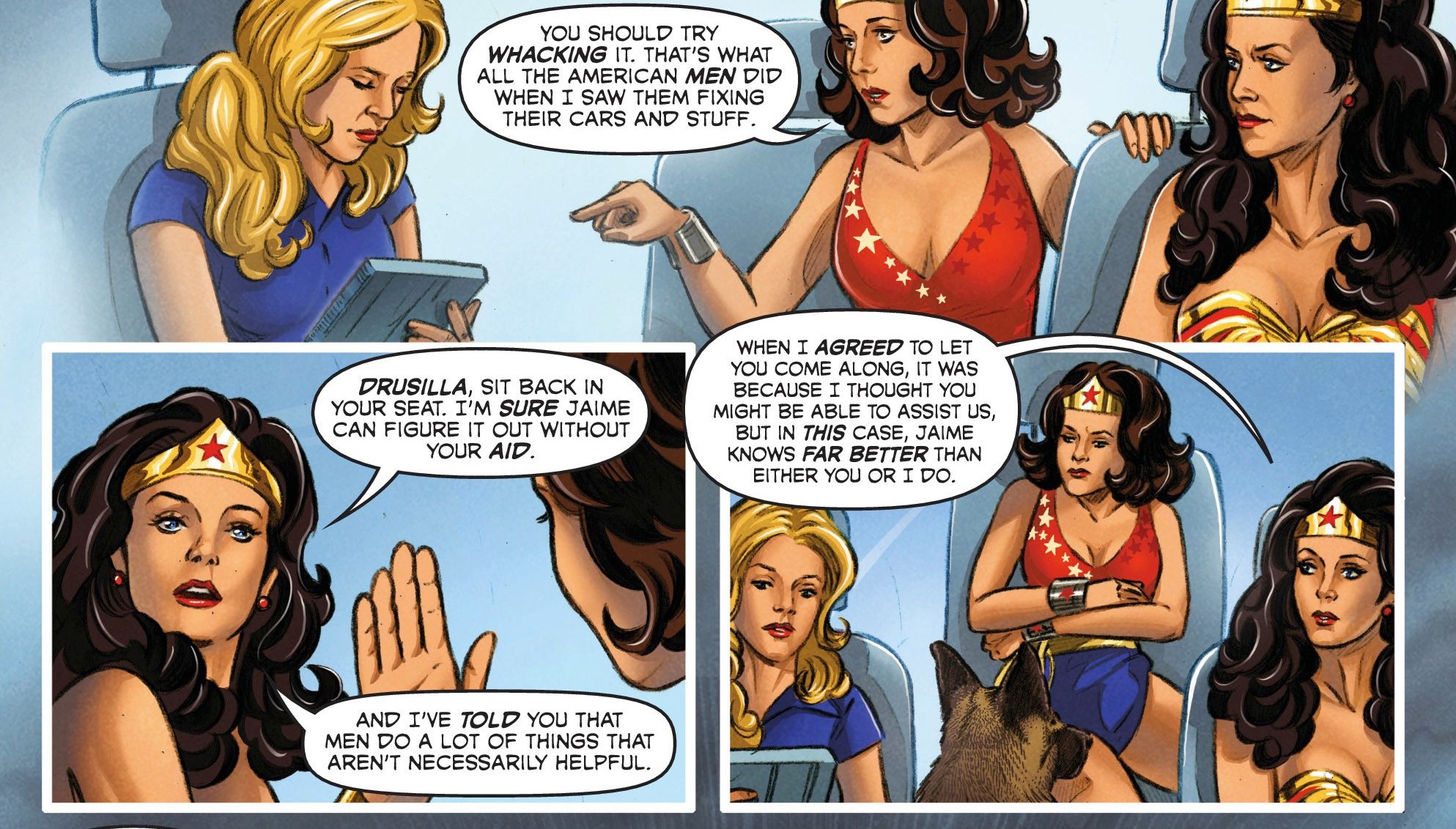This is Comic Book Easter Eggs, where I spotlight notable "Easter Eggs" (basically hidden references) within comic books or other media (so long as it is connected to comic books somehow).
With issue #6 of Wonder Woman '77 Meets the Bionic Woman getting released this Wednesday, we asked the writer of the comic, best-selling author Andy Mangels, for some of the secrets and easter eggs for the series so far. There are so many of these bad boys that we're going to spread it out over three days leading up to the release of the final issue on Wednesday! So #1-2 yesterday, #3-4 today and then #5 tomorrow.
Be warned, there are spoilers ahead... but they'll allow an appreciation for the immense research and knowledge that went into crafting this series that is selling out across the country and getting great reviews from critics and the fans!
NOTE FROM ANDY:
A quick note before you digest this list of Easter Eggs...
The WONDER WOMAN '77 MEETS THE BIONIC WOMAN story was designed so that even casual readers could enjoy it.
But, like any good franchise, whether it's Star Trek or Star Wars, Aliens or Buffy, or any number of comic books, anime, television, or film franchises, those fans who have a deeper knowledge and appreciation of the characers and their history want to know more!
So don't look at these Easter Eggs and footnotes as a necessity to enjoy the action-packed story, but instead, look at them as a way to deepen the experience and view just how the puzzle pieces all fit together. It's like a commentary track on a DVD; you can enjoy the project without it, or enjoy it even more with it.
Wonder Woman '77 Meets the Bionic Woman #3 Easter Eggs
Cover: Cat Staggs' cover for this issue is a very slight homage to a Neal Adams-drawn cover for the Wonder Woman record "The Return of Brunhilde."
Page One, Panel Five: As in the comics of that time, Diana has a mental link to the invisible plane. Also, Jaime really was a stewardess in The Bionic Woman episode "Fly Jaime."
Page Six, Panel Four: The Fembot in the background is Katy, Dr. Fanklin's favorite, as played by Janice Whitby.
Page Seven, Panel Two: Solano's first name, Thiago, is introduced here.
Page Seven, Panel Five: The Amazons thought they wiped Captain Radl's memories at the conclusion of "The Feminum Mystique." Apparently, they were wrong...
Also, Radl's first name, "Horst," is a Germanic invention by the author.
Page Eight, Panel Four: Played by John Houseman, Dr. Franklin was the creator of the Fembots. He inexplicably favored ascots.
Page Nine, Panel Four: As noted, the Fembot "son" of Dr. Franklin, Carl Franklin (played by Michael Burns), first appeared in The Bionic Woman two-parter, "Fembots in Las Vegas." His explanation of faking his father's death reveals why the OSI thought Dr. Franklin to be dead.
Page Ten: Although the start of this page recaps the introduction of Dr. Solano and Gloria Marquez in "The Return of Wonder Woman," Gloria fills in what happened after the episode, and how she came to be Dr. Cyber! Solano was portrayed by Fritz Weaver, while Gloria was played by Jessica Walter.
Page Eleven, Panel Four: Played by Frank Gorshin in Wonder Woman's "The Deadly Toys," Dr. Hoffman has a very strange sense of humor.
Page Eleven, Panels Five-Six: As seen in The Bionic Woman's "Biofeedback," Ivan Karp is an expatriate American who has become an international information broker. Who or what "The Gerent" won't be revealed until much later in the story...
Page Twelve, Panels Five-Six: Samarra is another of the countries named in "The Return of Wonder Woman," along with Lauray. Samarra is also where the state of Amapa in coastal Brazil would be on a real world map.
Page Twelve, Panels Seven: Jaime references a line from Diana Prince in "The Return of Wonder Woman" when she hears Solano's name. Nightshade was also the original name of Solano in early drafts of the episode's script!
Page Seventeen, Panel Two: Yes, Rover can talk. Many people forget that, perhaps purposely, as his voice was annoying.
Page Seventeen, Panel Four and Six: Jim and Helen Elgin were the stepfather and mother of Steve Austin, and became guardians of Jaime Sommers as a teen when her parents died. They were played by Ford Rainey and Martha Scott on episodes of The Six Million Dollar Man and The Bionic Woman. The importance of Jaime telling Jim she had flown a plane is because he piloted his own plane on the series!
Page Eighteen: Dr. Rudy Wells is responsible for the bionic implants in both Steve Austin and Jaime Sommers, and he was a regular on both The Six Million Dollar Man and The Bionic Woman. For the latter series, he was always portrayed by Martin E. Brooks,
Page Twenty, Panel One: Lynda Wilson is an assistant of Rudy Wells, and appeared in the "Kill Oscar" three-parter. She was played by Corrine Michaels.
Page Twenty, Panel Two: Max/Maximillian is the world's first bionic dog, and he appeared throughout The Bionic Woman's third season. He was played by several German Shepherd dogs.
Page Twenty, Panels Five-Seven: Diana can make mental connections with animals, as seen multiple times on the Wonder Woman TV series.
Page Twenty-Two: The appearance of the Fembot quartet here is meant to reflect scenes from "Fembots in Las Vegas," as these are some of the same models of Fembots. Peggy Callahan was Oscar Goldman's secretary — played by Jennifer Darling — and she had the unfortunate luck of being replaced by evil Fembots in two different storylines. Sorry, Callahan, make that three.
Go to the next page for Easter Eggs from the fourth issue!
Wonder Woman '77 Meets the Bionic Woman #4 Easter Eggs
Page One, Panel Two: Max was afraid of fire (pyrophobia) when Jaime first met him (in "The Bionic Dog"), due to a lab fire. Jaime helped him get over it.
Also, Diana's reference to a gorilla is a reference to the first season TV episode "Wonder Woman vs. Gargantua," in which Diana flew Gargantua to the Republic of Congo in her plane.
Page One, Panel Four: The Mental Radio was first introduced in Sensation Comics #3 (February 1942), and its distinctive receiver is adapted here.
Page One, Panel Five: Rena was played by Inga Nielsen in The New Original Wonder Woman pilot film, and was the best friend of Diana. She is on the beach with her when they find Steve Trevor washed ashore, and it is she who Diana defeats in the Amazon Olympics to become Wonder Woman!
Page Three: The Queen Mother of Paradise Island was portrayed by three actresses in the series: Cloris Leachman, Carolyn Jones, and Beatrice Straight. Artist Judit Tondora was directed to do an amalgam of the actresses for the Queen, but to mostly reference Beatrice Straight, since she played the 1977-era Queen.
Page Four, Panels One-Three: The fact that the Queen's name is never mentioned is deliberate. The TV series never named the Queen Hippolyta or Hippolyte, so the creators kept that in this series.
Page Five, Panel One: Drusilla/Wonder Girl was introduced as the younger sister of Wonder Woman in the two-part "The Feminum Mystique" storyline, in which she was played by newcomer actress Debra Winger.
Amadonna/Tina was introduced in the second season episode "The Girl From Ilandia," and was played by Julie Ann Haddock.
Also, Drusilla references Magda and Dalma, two other Amazons who were in "The Feminum Mystique." Dalma was a Golden Age character, having first appeared in the Wonder Woman story in Comic Cavalcade #12 in 1945.
Page Five, Panel Three: Amadonna/Tina is wearing Diana's tunic and sandals from Diana's comic adventures as Wonder Girl beginning in Wonder Woman #107 (July 1959). "Tina" was a name given to the girl from Ilandia when she was in America, but her other-dimensional name is Amadonna. The adoption by Amadonna of a shorter version of her name is a nod toward Donna Troy, the identity of Wonder Girl from the Silver Age.
Page Five, Panel Four: Drusilla's mention of ice cream is not a nod to the 2017 Wonder Woman movie, but to Drusilla's infatuation with ice cream in the TV series (which possibly inspired Geoff Johns to write that scene for Wonder Woman into a Justice League comic, and thus, into the film).
Page Five, Panel Five: Amadonna's reference to her dog Tiger is a reference to her dog in "The Girl From Ilandia" episode. Although its real name was "Katchoo," the pooch was also named Tiger for its role on The Brady Bunch.
Page Six, Panel Two: Radl mentions his memory is hazy; as noted before, this is because the Amazons wiped it after the events of "The Feminum Mystique." Here he also shows that he's told the others about the secret bullet-deflecting metal, and that the end-game is to make Fembots and other cybernetic beings out of the Amazon alloy.
Page Seven, Panel Six: Here's the big reveal that Joe Atkinson did not die in the first issue. Both shows — like many action series — would often fake deaths of heroes or villains.
Page Eight: The two Amazons on this page are real women. Joanna is actress Joanna Pang Atkins, who played Cindy Lee on The Secrets of Isis. Her reference to "The Dance of the Zephyr Winds" is a reference to the Isis saying "Oh zephyr winds which blow on high, lift me now so I can fly." Joanna is a world-renowned dancer in real life, a talent her Amazonian self also displays.
The lute-playing Amazon Allie is Alice Cloos, one of the world's biggest Wonder Woman collectors (her husband Art Cloos is one of the biggest Batman collectors). Alice plays music, though usually on a guitar.
Page Eight, Panel Five: Euterpe the Muse is one of the daughters of Zeus, and is the muse of music and lyrical poetry.
Page Nine, Panels One-Four: Although the TV series didn't really reflect a belief in gods and goddesses, it was important to the creators to establish that the television Diana did have ties and beliefs in the Greek pantheon, as did her comic book counterpart.
Page Nine, Panels Four-Six: Another pair of Amazons that are real women. Christie the historian is actually Christie Marston, the granddaughter of Wonder Woman's creator William Moulton Marston. The unnamed blond artist whom Diana never quite introduces properly is actually Judit Tondora, the artist for this series!
Page Ten, Panel One: Writer Andy Mangels wanted to introduce kangas to the television continuity. Kangas were first seen in Sensation Comics #6 (June 1942), and Wonder Woman's kanga was named "Jumpa." The kanga shown here is named "Baucis," after a kindly Phrygian woman in Ovid's tales of Greek and Roman mythology.
Page Ten, Panel Two: The Amazon game shown here is a cross between rugby and polo, to gain control of the "sphaira," which was a name for "sphere" in ancient Greek.
Page Ten, Panel Three: "Nikao" means "victory" in ancient Greek.
Page Twelve: This is the television continuity introduction of Nubia, who first appeared in the comics in Wonder Woman #204 (April 1973). Nubia was the equal of Wonder Woman, and was eventually revealed to have been created from dark clay by Hippolyta and stolen by Mars, the God of War. Nubia was made into a doll in 1976 by Mego, to go along with their doll line loosely based on the Wonder Woman TV series. Here, we reintroduce Carolyn Hamilton from the TV episode "Knockout" (played by Jayne Kennedy), and show that she has come to Paradise Island, reformed, and taken on the name and armor of Nubia.
Also, the references to Wimbledon, Billie Jean King, and Chris Evert are, of course to real tennis champions. The "Ojai Open Championship" is fictional, but refers to Jaime's hometown, where in our reality, the Ojai Valley Open Tournament is held. Author Mangels wanted Carolyn/Nubia to have a bit of a "fangirl" moment with Jaime to show that a world champion tennis player would have fans in the most surprising of places.
Page Thirteen, Panels One-Three: Fausta Grables appeared in the first season episode "Fausta: The Nazi Wonder Woman," played by Lynda Day George. In that episode, it was hinted that Wonder Woman was going to help her further on her road to reformation. Fausta debuted in comics in Comic Cavalcade #2 (Spring 1943).
Page Fourteen, Panel Four: This montage retells Jaime and Steve Austin's relationship from multiple episodes of The Six Million Dollar Man and The Bionic Woman. It's also Steve's most clear onscreen appearance in this series.
Page Fourteen, Panel Five: The island out past Max is Transformation Island, which becomes important later in the story.
Page Fifteen, Panel One: This montage retells Diana's origins from The New, Original Wonder Woman pilot film, and "The Return of Wonder Woman." Also, Diana drops hints about why she left Man's World after the war... a story for another day!
Page Fifteen, Panel Three: Jaime references "Saint Emile Island," which was Dr. Franklin's base in the three-part "Kill Oscar" storyline. In the real world, it would have been in Bermuda.
Page Fifteen, Panel Four: Diana references "Guanaray and Samarra," which were in the "The Return of Wonder Woman." Guanaray is where French Guiana would be on a real world map.
Page Seventeen: Radl's speech here and the visuals are meant to evoke the speeches of Adolf Hitler, as well as more contemporary demagogues.
Page Eighteen, Panel Two: Drusilla's blunt ideas about "help" were a source of humor in episodes she was in, and author Mangels was happy to include one of them here. Also note that Diana added a new invisible chair in the plane for Dru to sit in.
Page Eighteen, Panel Eight: Jaime references the sonic signatures of the Fembots. In the TV episodes, she could hear their transistor hum signals with her bionic hearing, but readers now know that they Franklin changed the frequency.
Page Twenty, Panel Four: Jaime makes a reference here to the Fembot that looks like Peggy Callahan, showing her annoyance.
Page Twenty-One: In the comics of the Golden and Silver Age, removing Diana' bracelets could send her into a berserker rage. On the TV series, however, this is not the case, although this is the first time they have been torn off in battle.
Page Twenty-Two, Panel Three: Jaime shouting Diana's name triggers Cyber, who hates Diana Prince, so is annoyed that she and Wonder Woman have the same name.
Check back tomorrow for Easter Eggs from #5!

